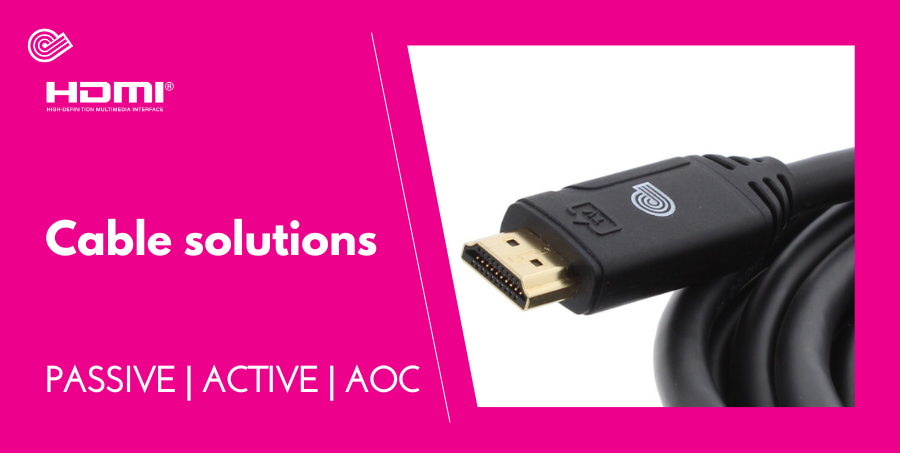What are the different types of HDMI cables?

The term HDMI stands for "high-definition multimedia interface", and HDMI cables have become the standard connecting lead between HD-capable AV devices, due to their versatility and ability to deliver high-quality digital signals.
HDMI's versatility, ability to transmit high-quality audio and video, and compatibility with a wide range of devices have made it a ubiquitous standard in the consumer electronics, entertainment, and professional industries. It continues to play a vital role in modern connectivity solutions.
HDMI cables come in various types and categories, including passive HDMI cables, active HDMI cables, and AOC (Active Optical Cable) HDMI cables. Each type has its own characteristics and is suitable for different purposes:
Passive HDMI Cables:
Passive HDMI cables are the most common type of HDMI cables. They are simple copper cables without any active electronics or signal boosters. Passive HDMI cables are ideal for relatively short cable runs, typically up to about 25 feet (7.6 meters) for HDMI 2.0 and shorter for higher resolutions or older HDMI versions. They are commonly used for connecting devices within the same room, such as connecting a Blu-ray player to a TV. Passive HDMI cables are affordable and widely available, making them suitable for many common home theatre and multimedia setups.
Active HDMI Cables:
Active HDMI cables have built-in signal boosters or equalizers to extend their effective length. These boosters help maintain signal integrity over longer distances. Active HDMI cables are used when you need to transmit HDMI signals over longer distances, typically beyond the limitations of passive cables. They can extend cable lengths significantly, often up to 100 feet (30 meters) or more. Active HDMI cables offer reliable signal transmission over longer distances without significant signal degradation. They are suitable for home theatre setups where devices are located far apart.
AOC (Active Optical Cable) HDMI Cables:
AOC HDMI cables use optical fiber technology to transmit HDMI signals. They contain optical fibers within the cable, along with active electronics to convert electrical signals to optical signals and back. AOC HDMI cables are designed for extremely long cable runs, typically exceeding 100 feet (30 meters) and sometimes reaching up to 300 feet (91 meters) or more. They are often used in commercial and professional settings, such as auditoriums and conference rooms, where extended cable lengths are required. AOC HDMI cables provide the highest level of signal integrity and are immune to electromagnetic interference. They are suitable for demanding applications that require long-distance HDMI transmission.
When choosing an HDMI cable…
It is essential to consider your specific requirements, including the distance between devices and the resolution you plan to transmit. Passive HDMI cables are suitable for most home setups, while active HDMI cables and AOC HDMI cables are reserved for longer cable runs where signal integrity is crucial. Additionally, always ensure that the HDMI cable you choose matches the HDMI version and features supported by your devices for optimal performance.

